Guest Post: Annica- Nir Dvorai
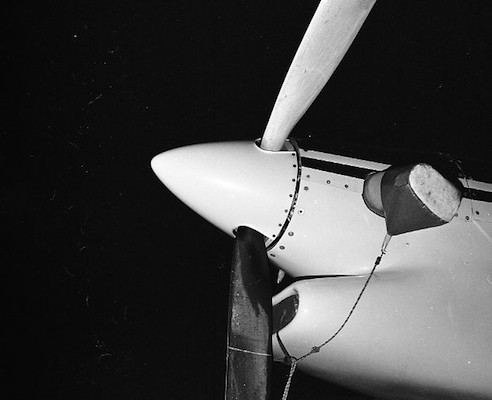
Airplane Engine, 2012, silver gelatin print, 35x35cm
Guest post by ophra paul.
Ophra immigrated to Israel from the US 3 years ago.
She is a graduate of the University of Maryland and an M.A. candidate at the Art History Department of the University of Haifa.
She is currently writing her thesis on contemporary Israeli photography and working at Gordon Gallery, Tel Aviv.
Exhibition: Annica
Artist: Nir Dvorai
Venue: Hanita Museum (Kibbutz Hanita)
Opening: December 14th
In Buddism the concept of Annica (impermanence) is one of the three tenants of existence. According to this basic philosophy, the physical world is in a perpetual state of flux; matter is constantly falling apart and recombining. It is the falling apart that terrifies Nir Dvorai, and it is the acceptance of this irrefutable fact that can bring peace or Nirvana.
The earliest pieces in the exhibit are small photographs taken at night. Dvorai, is a native of Southern Israel but a long-time resident of Haifa where he travels often, which gives him the chance to carefully observe his surroundings. With ceaseless curiosity, Dvorai constantly takes in the stimuli passing in front of him on the road and notices the little things many miss. He notices the forgotten objects, the soon to be demolished structures and the accidental sculptures. Though he observes these places by day, he only returns at night to steal a chance to save and expose the vanishing sites with his electronic flash. The essence of the subject is revealed only in the darkroom, where the light is burned into the paper for evermore. The lone elevator projecting upwards from a destroyed building is defiant, the curved pipe appears depressed and limp, and the sculpture of an excavated boat is eerily skeletal. Many of these sites have ceased to exist outside of Dvorai’s photographs.
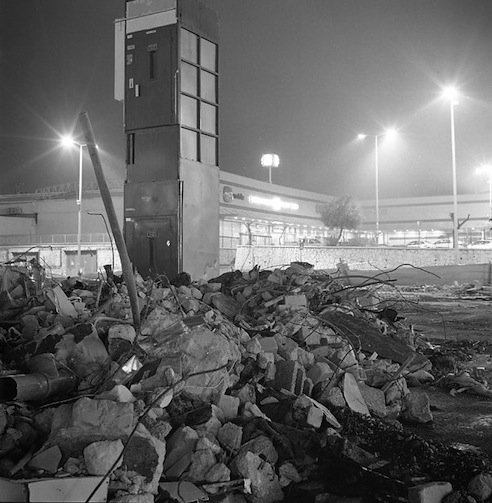
Elevator, 2013, silver gelatin print, 35x35cm
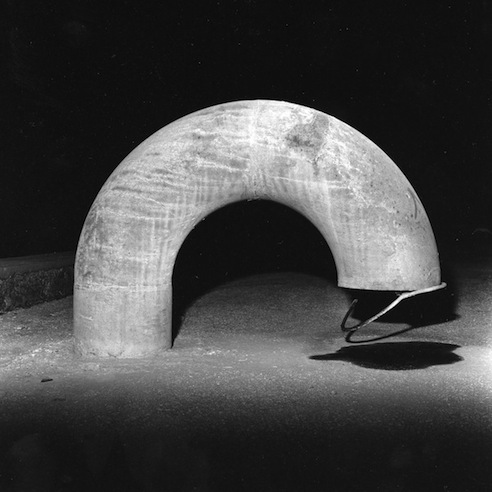
Drain Pipe, 2012, silver gelatin print, 35x35cm
Israel sits on a fault line and although earthquakes in and around Haifa are rare and weak, Dvorai is fixated on how the old buildings in the city would fair if the mountain suddenly shook. Dvorai is an enthusiast of the early photographs of the buildings, which were compiled a book by the architect Zvi Efrat. These images portrayed the buildings in an idyllic manner, perfect and pristine and also devoid of any sign of life. Dvorai is fascinated by how the act of living has changed that image to one that is now exuberantly chaotic, a jumble of air conditioning units, closed-in porches, clothes hanging out to dry and damage due to regular wear and tear. He photographs a city block, then copies the photographs in the darkroom, cuts interesting segments, sorts them and layers them, gluing them by hand and intuitively creating patterns akin to seismic motion. They too have an abstract beauty and are empty of people but on closer inspection they are full of human imprints and detritus.
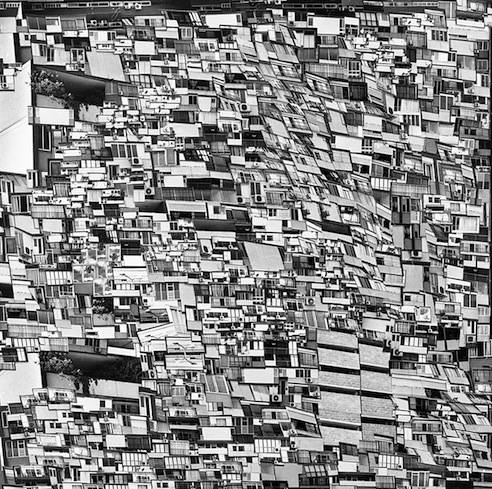
Leon Blum 2, 2012, silver gelatin prints collage, 60×60 cm
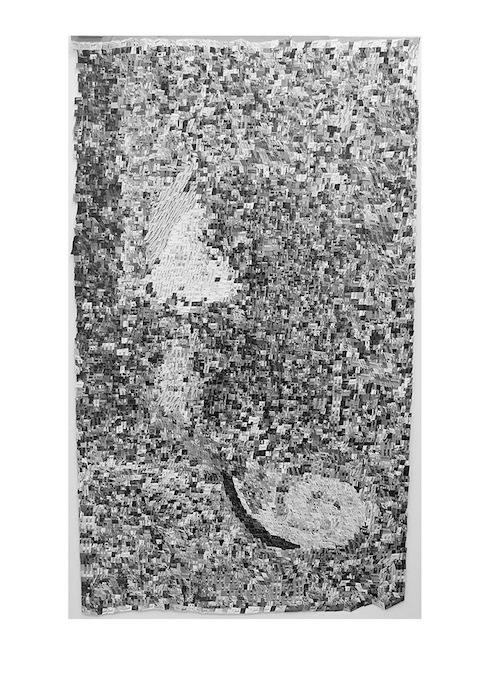
Mishkenot Geulam, 2012, silver gelatin prints collage, 160×100 cm
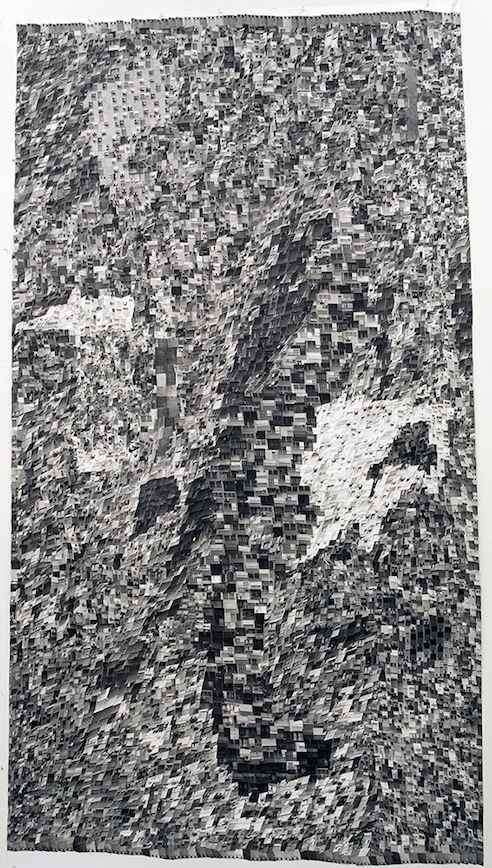
Shaar Aliya, 2013, silver gelatin prints collage, 180×100 cm
In his most recent pieces, Dvorai continues to explore the human tendency to preserve and memorialize while venturing from photography to sculpture. Dvorai removes the urban decay from the reassembled collages and places it into the world of objects by recycling scraps from the cut photographs. He takes these cut outs and places them in a glass box, generating a haunting impression of a building destroyed in a disaster. The diminutive size and clean whiteness simultaneously evokes an architectural model. The large light bulbs in the exhibition are a distinctive feature of buildings in Haifa; almost all of the large old buildings have these bulbs outside to illuminate the street number of the building and the entry hall. Dvorai turns these banal pieces of plastic into archeological specimens by cracking them and gluing them together with archeological glue. His snow globe is created using a simple light bulb filled with oil and a complete photograph of one of the decaying buildings. When flipped and shaken the building does not fall, instead the viewer is left with the ridiculous and unlikely image of snow in balmy Haifa.
Dvorai’s black and white photographs, collages and constructions, confront the viewer with images of deterioration and instability, however through careful composition and peaceful shades of grey, they also offer amusement, comfort and acceptance.

Archeological Boats Presentation Device, 2013, silver gelatin print, 35x35cm

Fig, 2013, silver gelatin print, 35x35cm
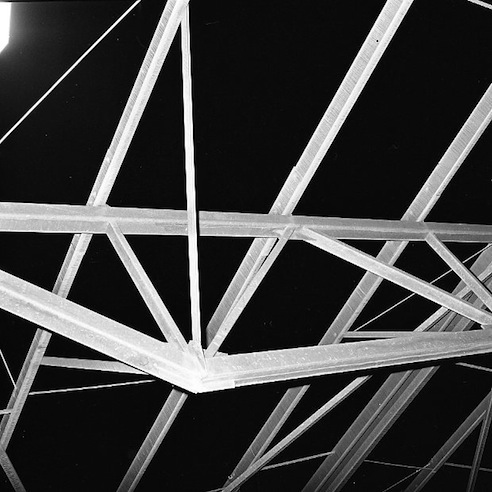
Swimming Pool Rooftop, 2012, silver gelatin print, 35x35cm
The exhibit opens this Saturday, December 14th at 11am on Kibbutz Hanita. The exhibit will be up for two months.
Opening hours for the museum are Mon-Thurs, 9:00-14:00 and Fri, Sat, 10:00-13:00.